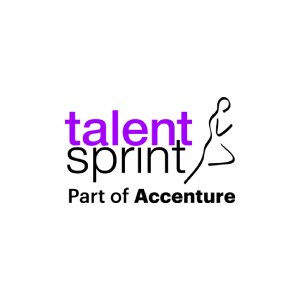KPI’s to Measure Sustainability Goals in 2025

Sustainability means much more than a trending word in today's business world. Companies just need measurable outcomes to track their environmental progress. Sustainability KPIs help translate environmental effects into concrete figures.
India is witnessing this shift in real time. From Tata’s aggressive renewable energy targets to ITC’s water‑positive achievements, businesses are embracing KPIs that not only track their environmental impact but also help them innovate, stay competitive, and meet global sustainability benchmarks.
These indicators have become the pulse of corporate sustainability, showing leaders exactly where they stand and where they must head next.
Also Read: Sustainability Trends 2025: Your Practical Guide to Green Success
Why Sustainability KPIs Matter in 2025?
The year 2025 marks a turning point for sustainability reporting and measurement. Businesses must track meaningful sustainability metrics to survive and grow as global regulations become stricter and stakeholder expectations change.
1. The Rise of ESG Reporting Standards
In recent times, the regulatory landscape for sustainability reporting in India has changed drastically.
For instance, SEBI mandated the filing of a Business Responsibility and Sustainability Report for the top 1000 companies starting from the financial year 2021-22. And on the other side, the International Financial Reporting Standards (IFRS) S1 and S2 standards are creating a single global baseline for ESG reporting.
2. Investor and consumer expectations
Corporate sustainability initiatives are now mainly driven by investor demands. ESG is no longer a “good to have” but a market expectation in India.
For example, Major e-commerce platforms like Flipkart and Amazon India now highlight eco-friendly products and sustainable seller practices, catering to these conscious buyers.
3. Lining up with global climate goals
Companies that set science-based emissions reduction targets throughout their value chains help curb the climate crisis. This approach ensures their business models create value in a carbon-restricted world. Organisations that fail to provide credible explanations risk financial, market, and legal consequences.
Also Read: The Three Pillars of Sustainable Development
Top sustainability KPIs to track
Organisations need the right sustainability KPIs to measure their environmental footprint and spot ways to improve. Here are eight metrics that give you a detailed view of your sustainability results.
1. Greenhouse gas emissions (GHG)
Greenhouse gas emissions are the carbon footprint of a company that they leave behind, so to measure this ,first you have to understand the three scope formula, which includes three scopes of GHG emissions.
Scope 1: Direct emissions from owned sources,
Scope 2: Indirect emissions from purchased energy, and
Scope 3: Value chain emissions.
Teams can track these emissions in metric tonnes of CO2 equivalent using spectroscopy techniques and chamber-based approaches.
2. Energy consumption and efficiency
Energy performance indicators (EnPIs) help measure improvements in energy use and efficiency. These metrics show up as simple consumption figures, intensity ratios (energy per unit of output), or complex models in kilowatt-hours (kWh).
Energy efficiency improvements could cut CO2 emissions by more than a third between now and 2030.
3. Water usage and water efficiency
Water tracking includes total consumption, recycled amounts, waste, and treatment before ecosystem return. Monitoring total water used, recycled water, and treatment practices helps you spot waste and find ways to conserve. In a country like India, where water scarcity is real, efficiency here is both an environmental and a social responsibility.
4. Waste generation and recycling rate
According to Statista, Recycling rates of the different waste streams in India were, in general, low, as only a small percentage of waste is being recycled.
5. Product lifecycle and recyclability
Lifecycle Assessment (LCA) shows environmental effects from raw material extraction through disposal.
For example, Companies like Honda now design products specifically to be recycled at the end of their life.
6. Supply chain emissions and logistics
Your sustainability story doesn’t end at your front door. In fact, about 80% of a company’s environmental impact often lies in its supply chain. Tracking emissions from suppliers, manufacturing partners, and logistics providers helps you see the full picture.
7. Renewable energy adoption
Switching to renewable energy is like swapping a diesel generator for an endless stream of clean sunshine. Tracking what percentage of your energy comes from renewables, solar, wind, and hydro, tells you how close you are to energy independence and a low‑carbon future
8. Stakeholder engagement metrics
Website traffic, social media interaction, event turnout, and survey responses show engagement levels. Teams also need to look at partnership results, stakeholder influence, and overall engagement ROI.
Also Read: The Three Pillars of Sustainable Development
How to Collect and Analyse sustainability data?
Strong data collection systems are essential to measure sustainability KPIs. Companies need reliable ways to capture, analyse, and understand environmental metrics across their operations.
Using IoT and smart meters
Smart metres and IoT devices give up-to-the-minute sustainability data that allows precise monitoring of resource use. These technologies track detailed energy usage patterns that help businesses spot inefficiencies and take targeted action. IoT-enabled asset monitoring has transformed how utility companies work by showing immediate performance and condition updates.
Third-party sustainability tools
External sustainability assessment services give detailed evaluations based on environmental criteria. These audits look at corporate principles, stakeholder participation, and strategic ESG approaches. Companies can meet reporting requirements more easily with specialised software that streamlines how they collect, analyse, and share data.
Internal audits and reporting systems
Internal audit teams know their company's controls well and can verify if sustainability data is accurate. The room to improve is substantial since about 60% of organisations worldwide don't conduct internal ESG audits.
Tracking product-level data
Product carbon footprint calculations are vital since Scope 3 emissions make up over 70% of total emissions. This detailed approach helps companies find emission hotspots and focus their decarbonization efforts across the value chain.
The Real World Examples
Indian corporations lead the way with remarkable sustainability metrics, setting clear targets for environmental improvement.
1. Tata Group's carbon neutrality goals
Tata Motors has ambitious plans to achieve Net Zero greenhouse gas emissions by 2040 for passenger vehicles and 2045 for commercial vehicles. Tata Steel wants to reduce CO2 emission intensity to less than 2 tCO2/tcs by 2025 and below 1.8 tCO2/tcs by 2030. The company's carbon footprint has already dropped by 20% since 2005.
2. ITC's water-positive initiatives
ITC's watershed development projects have created rainwater harvesting potential that exceeds 46 million kilolitres. This is a big deal as it means that it's nearly four times its operational water consumption. The company has managed to keep its water-positive status for 22 straight years. Their River Basin Revival Programme covers five states, and four basins have already achieved water-positive status.
Challenges and opportunities in measuring KPIs
Measuring sustainability KPIs brings both complex challenges and remarkable opportunities to forward-thinking organisations in 2025.
A. Data availability and accuracy
Organisations face persistent obstacles with incomplete data when assessing sustainability accurately. The Asia-Pacific region couldn't measure more than half of its SDG targets in 2020 due to a lack of data. Modern reporting has improved, yet the environment-related indicators still lack proper data. Companies find it hard to handle different data sources when tracking energy consumption metrics and supply chain indicators.
B. Standardisation of metrics
The sustainability reporting world suffers from too much fragmentation today. Sustainability covers many different issues, which makes standardised measurement harder than financial accounting. Companies can't make meaningful comparisons because universally accepted standards don't exist.
C. Opportunities for innovation
Sustainability measurement does more than ensure compliance - it powers breakthroughs. Companies that make ESG considerations their core strategy create new revenue streams. Modern analytics and artificial intelligence help them spot material ESG risks efficiently.
D. Regulatory compliance in India
SEBI has made sustainability reporting rules stronger. The top 150 listed Indian companies must provide "reasonable assurance" on ESG metrics starting FY 2023-24. This standard is stricter than many global counterparts that only require limited assurance.
Conclusion
Sustainability KPIs have become essential for businesses in 2025, it’s not just an optional activity anymore. This article explores how regulations, what investors need, and what consumers expect push companies to create reliable sustainability metrics.
Success stories from Tata, ITC, Mahindra, and Zomato prove that Indian companies can hit impressive sustainability targets through careful measurement and focused actions.
Data availability and standardisation pose challenges, but opportunities for state-of-the-art solutions and value creation remain strong. Companies that accept new ideas about detailed sustainability measurement gain a better reputation, improved operations, and access to growing eco-friendly markets.
Your trip to sustainability needs dedication and accuracy. Picking the right KPIs, setting up reliable measurement systems, and tracking progress consistently helps your organisation exceed compliance requirements. Well‑structured sustainability courses help professionals choose the right KPIs, set up reliable measurement systems, and thrive in an economy that rewards environmental responsibility more each day.
Because, "What you don’t measure in sustainability today will cost you your market tomorrow."
Frequently Asked Questions
Q1. What are the key sustainability KPIs businesses should focus on in 2025?
The top sustainability KPIs to track include greenhouse gas emissions, energy consumption and efficiency, water usage, waste generation and recycling rates, product lifecycle and recyclability, supply chain emissions, renewable energy adoption, and stakeholder engagement metrics.
Q2. Why has sustainability become critical for business success in 2025?
Sustainability has become essential due to tightening regulations, evolving investor expectations, and increasing consumer demand for environmentally responsible practices. It's now a key driver of business growth, reputation, and long-term viability across industries.
Q3. How are Indian companies setting benchmarks in sustainability?
Indian corporations like the Tata Group, ITC, Mahindra, and Zomato are setting impressive sustainability benchmarks. For instance, Tata Motors aims for Net Zero emissions by 2040-2045, ITC has maintained a water-positive status for 22 years, and Zomato has implemented significant plastic waste reduction initiatives in food delivery.

TalentSprint
TalentSprint is a leading deep-tech education company. It partners with esteemed academic institutions and global corporations to offer advanced learning programs in deep-tech, management, and emerging technologies. Known for its high-impact programs co-created with think tanks and experts, TalentSprint blends academic expertise with practical industry experience.



